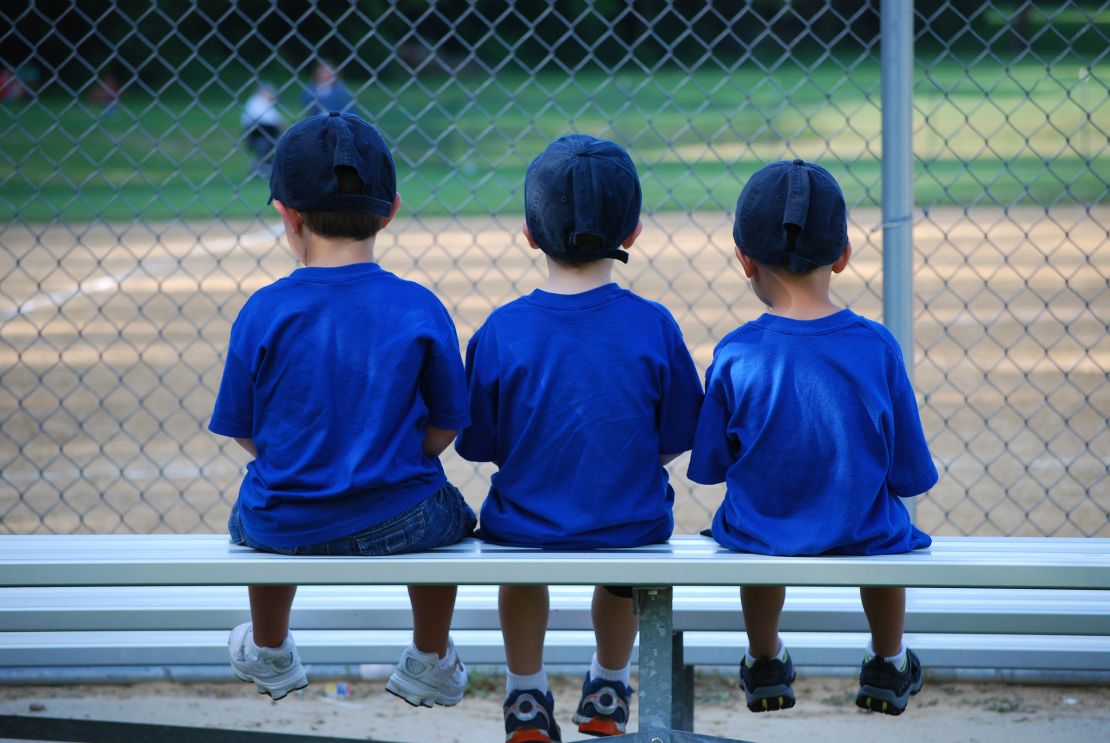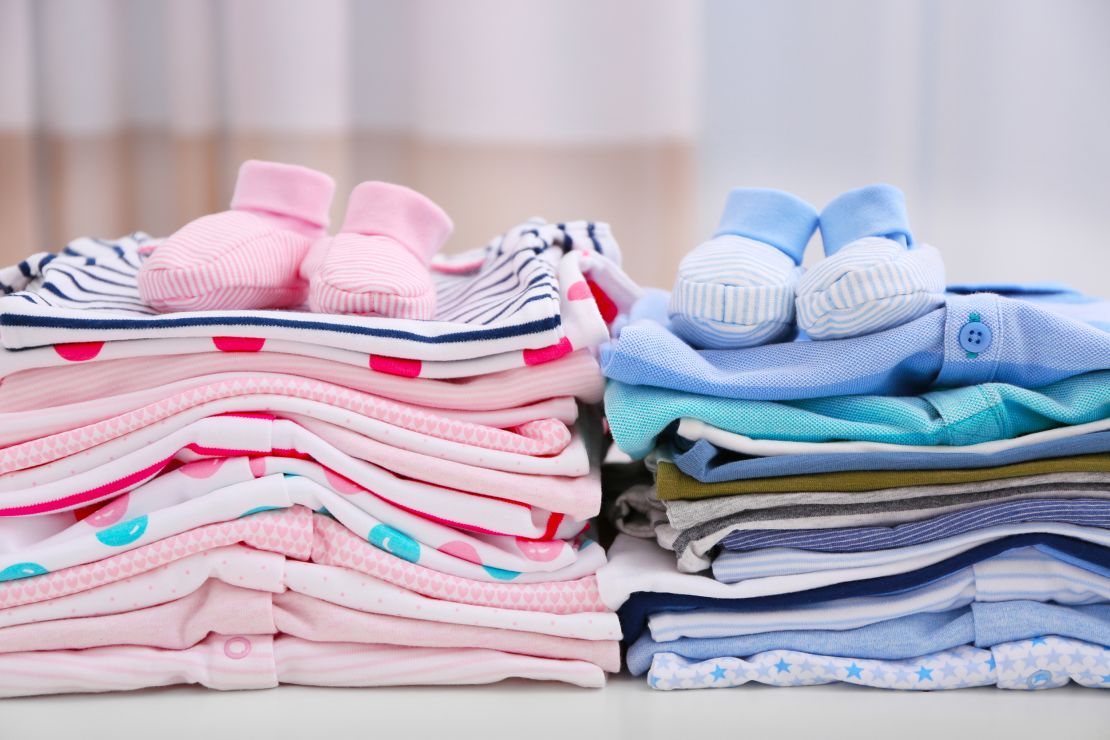Gender reveal parties. Boys don’t cry. That color is for girls. That bathroom is for boys. That sport is only for “real” girls. That’s not the right clothing section, toy, partner, door, major, job or life for you.
We are taught before we are even born that there are strict rules in life based on whether you fall into the blue bucket or the pink one.
That assignment rules our every waking moment. It dictates our hobbies, our career pursuits, our earning potential, our safety and the expectations others have for us regarding love and life, all the way through to our last dying breath.
If you happen to not fall neatly into one of those two limited buckets – and an increasing number of people do not, with 6 in 10 Gen Zers saying there should be more than just two gender options on forms, according to the Pew Research Center – the potential challenges are many.
You may find it hard to be your true self. You may be rejected by your loved ones, even kicked out of your home. You may have trouble accessing health care, securing a job and safely navigating public spaces. The list goes on, according to a recent study by Movement Advancement Project and GLSEN in partnership with the National Center for Transgender Equality and the National Education Association.
Pride Month is almost over, and while we can create space to celebrate the gains we have made, we must also acknowledge the work ahead in creating a truly safe and gender-inclusive world.
The truth is that embracing diversity in how our kids identify, express and explore their genders is a beautiful thing. It’s how they learn who they are and how we create a freer and more equitable world.
What do we do next?

We must stop policing gender.
We as a society have policed gender for far too long, experts say, forcing people into boxes in which they may not fit.
“Transgender and nonbinary youth continue to face an incredibly hostile political climate. On the first day of Pride Month this year, Florida became the ninth state in the nation to ban trans students from playing school sports – and several other anti-LGBTQ bills are still being pushed across the country,” said Amit Paley, CEO and executive director of The Trevor Project, a suicide prevention and crisis intervention organization for LGBTQ youth.
How to get help:
In addition to being denied equal access to sports and other facets of civic life, transgender kids are more likely to face bullying, depression and suicidal ideation because of societal rejection, according to multiple studies, including a 2016 study authored by Professor Kristina Olson, a psychology professor at Princeton, published in the Journal of Pediatrics.
There have also been a record number of attacks this year on the streets on LGBTQ people and transgender children in particular, according to the Human Rights Campaign.

Policing gender isn’t just limited to the halls of the legislature or the rules of the classroom or church pews.
We police our children’s gender when we deny them clothing or toys because we don’t think it aligns with their assigned gender. We reinforce those tropes when we assign gender to their behaviors – shunning boys for showing emotion or girls for being tough, default signing girls up for ballet and boys for baseball. It boxes them into lifelong roles of subjugation, repression or worse if they end up coming out as transgender or nonbinary.
“Gender diverse identities are a normal part of human experience, and young people increasingly have the insight, language and bravery to express their identity,” said Dr. Kacie Kidd, a pediatrician and adolescent medicine fellow and UPMC Children’s Hospital of Pittsburgh.
“Creating a gender inclusive environment is critical for the health and well-being of our children. We know that gender diverse youth thrive when supported by their parents, schools and communities,” she said.
Create a more gender-inclusive environment
One of the most powerful things we can all do – whether we identity as LGBTQ or not or have a child who does – is to actively commit to fostering an environment in which we dismantle the outmoded, binary gender norms.
The good news, experts say, is that we can have a real and meaningful impact if we take a few simple steps.
A good place to start, according to Kidd, is by using affirming names and pronouns.
“It is on all of us to listen to our children and know that they are the experts of their own lived experience so that they can feel safe being and exploring who they are,” she said.
That means letting them tell you what their gender is, not assuming or even prying. It means understanding the difference between gender identity and gender expression, and how those are distinct from what you’re assigned at birth – and entirely different from who you might be attracted to. It means recognizing that kids (and hey, some adults too) are in the process of self-exploration, and how they feel or express themselves may change from day to day and year to year.
The Gender Unicorn is a helpful starting place for these discussions.
Look at your language and clothes
Actively advocating that all of the spaces our children inhabit – our home and those of friends and relatives, schools, medical facilities and other social arenas – are gender-affirming and inclusive.
That means dropping assumptions about gender in our language and practices and creating safe spaces where kids can express themselves, breaking down walls that dictate or reinforce activities, expectations and treatment based on the child’s assigned or perceived gender.

Speak up if you hear someone policing a child’s gender and encourage the children in your life to feel free to express and explore their own identities through play and dress-up. Don’t limit what toys or books or clothes they can access on the basis of their assigned or perceived gender.
We should support children in their freedom to try different things on for size, including toys and books and games and sports and clothing, regardless of whether we think it aligns with our expectations of who they are or should be.
The Trevor Project’s Guide to Being an Ally to Transgender and Nonbinary Youth offers a great primer and tangible tips on how to support transgender and nonbinary kids, and indeed all kids, including the basics of gender, forms of address that show respect, and common mistakes and what to do if you’ve made one.
Sometimes being supportive doesn’t mean doing anything more than simply providing a loving and affirmative place for kids to express themselves, including “reminding trans youth that (they) are beautiful and amazing,” said Susan Maasch, director of Trans Youth Equality Foundation, a Maine-based nonprofit that provides education, advocacy and support for transgender children, youth and their families.
“It might be hard at times,” she said, speaking directly to kids who feel they don’t fit into their assigned gender, “but it’s a beautiful journey about love, solidarity, hope, diversity, difference, friendship and inclusion! You deserve love.”
Allison Hope is a writer and native New Yorker who favors humor over sadness, travel over television and coffee over sleep.



